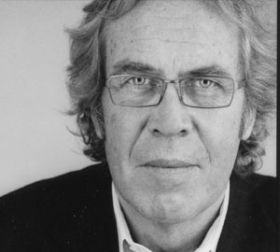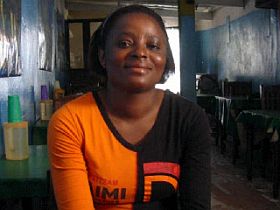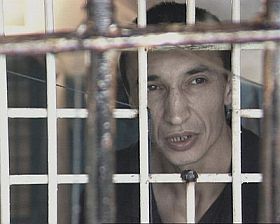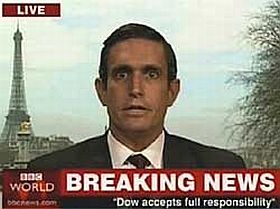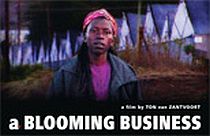It is not everyday you see such an interesting thoughtprovoking text about film as the one I saw when visiting the site of Christopher Pavsek, that accompanies his film: To Those Born After (idfa 2005)
I firmly believe that film can be intellectually engaging and emotionally moving at the same time. Flms which demand serious effort on the part of their viewers can also be enjoyable. Brecht taught us that to think and learn does not of necessity exclude the possibility of pleasure. That is, I believe, a utopian element of my film. You have to work at it when you watch, but hopefully the work provides joy and is worthwhile. Not all work, after all, has to be toil done merely to earn a wage.
It is also utopian that something beautiful can be cobbled together from so much that is ugly. It proves that there is hope. This is important to remember for people like me who are constitutionally bleak-minded; it is also good to recall for my friends who tell me that my film depresses them. I think it is the world that is depressing them and my film makes them realize this a little.
If that were all that my film did I would not consider it a success. It also seems to offer a bit of an experience of beauty. That experience is disconcerting because you do not generally expect something like beauty to emerge in an artwork where you see human beings murdered and literally blown to pieces. But it is also intellectually reassuring in that it shows a way forward.
A critic once wrote something about my film that I cherish. He said the film “shows us how to cross the world several times with the minimum of means — with no more than a pilgrim’s staff.” I take this to mean a couple things. “To Those Born After” is a piece of what is called “appropriate” or “sustainable technology” in the arid language of economics. The only difference is that it so far has profited no one. But it is also a comment on the possibilities of minimalism, a minimalism whose goal is not to reduce art to pure aesthetic gestures but to propel art outward into the world and to allow the world into art. The simple signs and symbols have always been the best. My favorites: a camera and an eye; a hammer and a sickle.
There are two images that I believe should be shown on film or video only with the greatest care or perhaps not at all. One is the image of the World Trade Center burning and collapsing. It turns your mind off to see that; the response is Pavlovian. The other is any image of George W. Bush speaking with synchronous sound. The ban on graven images that Adorno and Benjamin so cherished was misplaced. Images of god or utopia are not the problem. It is images of people like Bush that are dangerous because the images grant a particular substance to him when he literally has none, aside from his crude corporal materiality. Godard once said that the original mission of cinema was to show us that the world was there. But then it became the mission of cinema to make us believe in the world on the screen. The last thing we should do is believe in a human being who has no thoughts of his own and who says nothing that is true.
My eldest daughter is the child in the images at the end of the film. She is a remarkable human being worth believing in. From very early on she disliked having her picture taken and that’s why so many pictures of her that we do have are stolen images. Not quite “life caught unawares” but more like “life caught with its guard down.” I don’t bother her much with the video camera now. The few video bits we do have of Sophie often end with her snarling at the camera or turning away as she realizes she’s been caught, as she does at the end of this film. It is a good reminder that we should be careful of what we demand from those born after. We don’t, after all, want them to turn away as well.
http://www.sfu.ca/~cpavsek
… and there are more clever words from this director to read on the site of D Word that right now discusses the report Honest Truths: Documentary Filmmakers on Ethical Challenges in Their Work published by Pat Aufderheide on September 8th.
http://www.d-word.com



